
The Summerland disaster occurred when a fire spread through the Summerland leisure centre in Douglas on the Isle of Man on the night of 2 August 1973. Fifty people were killed and 80 seriously injured. The scale of the fire has been compared to those seen during the Blitz.
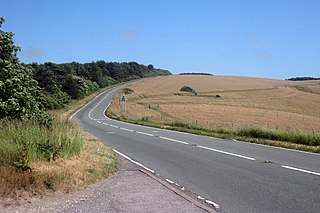
The A259 is a road on the south coast of England passing through Hampshire, West Sussex, East Sussex, and Kent, and is the longest Zone 2 A road in Great Britain. The main part of the road connects Brighton, Eastbourne, Hastings, Rye, and Folkestone.

The West Pier is a ruined pier in Brighton, England. It was designed by Eugenius Birch and opened in 1866. It was the first pier to be Grade I listed in England and Wales but has become increasingly derelict since its closure to the public in 1975. As of 2022 only a partial metal framework remains.

East Sussex College or East Sussex College Group is the largest higher education college in East Sussex, providing education and training from foundation to degree level. The college educates almost half of the county's young people and over 8,000 adults each year at campuses in Lewes, Eastbourne, Hastings and Newhaven, and in the workplace.
The Marina Torch, also known as Dubai Torch, Dubai Torch Tower, and The Torch, is a residential skyscraper in Dubai Marina in Dubai, United Arab Emirates. It is 352 metres (1,155 ft) tall, with 86 floors above ground, and was the tallest residential building in the world on its completion in 2011, surpassing Q1 in Gold Coast, Australia.

Eastbourne Pier is a seaside pleasure pier in Eastbourne, East Sussex, on the south coast of England.

The Grand Pier is a pleasure pier in Weston-super-Mare, North Somerset, situated on the Bristol Channel approximately 18 miles (29 km) southwest of Bristol. It opened in 1904 and has been Listed Grade II since 1983. It is 366 metres (1,201 ft) long.

Hastings Pier is a public pleasure pier in Hastings, East Sussex, England. Built in 1872 and enjoying its prime in the 1930s, it became a popular music venue in the 1960s. The structure suffered major storm damage in 1990, and was closed to the public for a time before closing completely in 2008, and 95% destroyed by a fire in 2010. Hastings Pier Charity oversaw a rebuilding project, with the pier reopening on 27 April 2016. The redeveloped pier won the 2017 Stirling Prize for architecture.

The South Parade Pier is a pier in Portsmouth, England. It is one of two piers in the city, the other being Clarence Pier. The pier once had a long hall down its centre which housed a seating area and a small restaurant. The outside of the hall is a promenade which runs the length of the pier. Once fallen into disrepair, as of 2017, the pier has been developed into an amusement arcade and food outlet.

Eastbourne is a town and seaside resort in East Sussex, on the south coast of England, 19 miles (31 km) east of Brighton and 54 miles (87 km) south of London. Eastbourne is immediately east of Beachy Head, the highest chalk sea cliff in Great Britain and part of the larger Eastbourne Downland Estate.

Henry Currey (1820–1900) was an English architect and surveyor.

The Royal Albion Hotel is a 3-star hotel in the seaside resort of Brighton, part of the English city of Brighton and Hove. Built on the site of a house belonging to Richard Russell, a local doctor whose advocacy of sea-bathing and seawater drinking helped to make Brighton fashionable in the 18th century, it has been extended several times, although it experienced a period of rundown and closure in the early 20th century. A fire in 1998 caused serious damage, but the hotel was restored.

The Grand Hotel is a Victorian hotel, also known as the 'White Palace', located on King Edwards Parade, Eastbourne in East Sussex, England. The 5 star hotel is part of an independent UK based hotel group, Elite Hotels, who also own Tylney Hall in Hampshire and Ashdown Park Hotel near Forest Row.
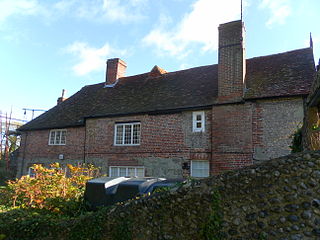
Langney Priory is the modern name of Langney Grange which served an agricultural manor of several hundred acres providing produce for Lewes Priory Cluniac monastery. It was established before 1121 in the village of Langney, East Sussex, England and is a Grade II* listed building. In addition to the five-bedroom house and monastery, the property contains a detached three-bedroom cottage, a large outbuilding with two garages, a workshop and a store room.
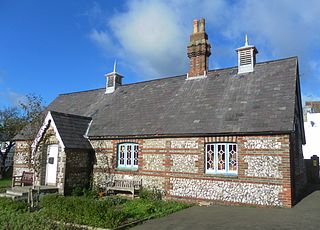
There are more than 130 listed buildings in the town and borough of Eastbourne, a seaside resort on the coast of East Sussex in England. Eastbourne, whose estimated population in 2011 was 99,400, grew from a collection of farming hamlets into a fashionable holiday destination in the mid-19th century; close attention was paid to urban planning and architecture, and the main landowners the Dukes of Devonshire placed restrictions on the types and locations of development. As a result, much of the resort retains its "basic motif" of late Regency and early Victorian houses, hotels and similar buildings, and also has an extensive stock of 19th-century churches. Coastal fortifications have been strategically important for centuries, and structures such as Martello towers and fortresses have survived to be granted listed status. A few older buildings—priories, manor houses and the ancient parish church—are also spread throughout the borough, whose boundaries take in the dramatic cliffs at Beachy Head and its two listed lighthouses.
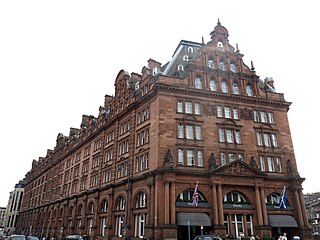
Waldorf Astoria Edinburgh - The Caledonian is a five-star hotel in Edinburgh, Scotland. Opened in December 1903, it is an example of a British grand railway hotel, formerly called The Caledonian Hotel, and nicknamed 'The Caley'. It stands at the west end of Princes Street and is a category A listed building.

The Royal Clarence Hotel is a former hotel in Cathedral Yard, Exeter, Devon, England. It is often described as the first property in England to be called a hotel; however, The German Hotel, London, was described in this way in 1710, so it is probably the second. Since 2005 the 53-bedroom hotel was branded as ABode Exeter.

On 14 June 2017, a high-rise fire broke out in the 24-storey Grenfell Tower block of flats in North Kensington, West London, at 00:54 BST and burned for 60 hours. 72 people died, two later in hospital, with more than 70 injured and 223 escaping. It was the deadliest structural fire in the United Kingdom since the 1988 Piper Alpha oil-platform disaster and the worst UK residential fire since World War II.
On 27 August 2017, Beachy Head and beaches including Birling Gap, in the English county of East Sussex, were evacuated following a suspected chemical leak. Visitors reported ill effects after the appearance of a "mist", and 233 people were treated at Eastbourne General Hospital, initially with a full chemical decontamination. Witnesses reported stinging and dried-up eyes, regardless of repeated eyewashes.
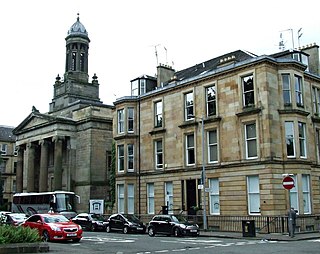
Kelvingrove is a neighbourhood in the city of Glasgow, Scotland. It is situated north of the River Clyde in the West End of the city, and directly borders Kelvingrove Park to the north and the grounds of the Kelvingrove Art Gallery and Museum to the west. Its other boundaries are not precisely defined, but roughly correspond to Sauchiehall Street to the south opposite the Sandyford neighbourhood, and the Charing Cross area to the east.



















